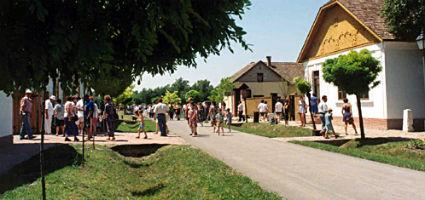2025. December 28. Sunday
Ópusztaszer National Historic Memorial Park - Ópusztaszer
 |
Address: 6767, Ópusztaszer Szoborkert 68.
Phone number: (62) 275-133 /103, (62) 275-133 /104
E-mail: info@opusztaszer.hu
Opening hours: 01.04-30-10.: Tue-Sun 10-18
01.11-30.03.: Tue-Sun 10-16 (Skanzen, external exhibiton closed) The current fare for those interested informed about the institution's website: www.opusztaszer.hu |
In the outskirts of Hódmezővásárhely 66 reading groups functioned at the beginning of the 20th century. The reading Association of Pusztafeketehalom founded in December 1890 was one of these. The aim of the foundation of the reading groups of the homesteads was to provide a chance and possibility to those living far from the towns to enjoy and at the same time cultivate themselves.
The large ward could occupy 150-200 people at a time. Lectures, balls, dinners, etc could be held there.
Next to the ward was the drinking place where the quests were served by the bartender. The popularity of the lectures is proven by the fact that the wall between the drinking place and the ward was pulled down and the drinking place was converted to a stage. Following this, the drinks were served from the kitchens where tea and coffee was made as well.
The room and kitchen of the caretaker was in the back of the building. The furnishing of the small flat was simple; it mirrored the social stand of its tenant. A penniless peasant cleaned and yearly painted the building for living in it.
The large ward could occupy 150-200 people at a time. Lectures, balls, dinners, etc could be held there.
Next to the ward was the drinking place where the quests were served by the bartender. The popularity of the lectures is proven by the fact that the wall between the drinking place and the ward was pulled down and the drinking place was converted to a stage. Following this, the drinks were served from the kitchens where tea and coffee was made as well.
The room and kitchen of the caretaker was in the back of the building. The furnishing of the small flat was simple; it mirrored the social stand of its tenant. A penniless peasant cleaned and yearly painted the building for living in it.